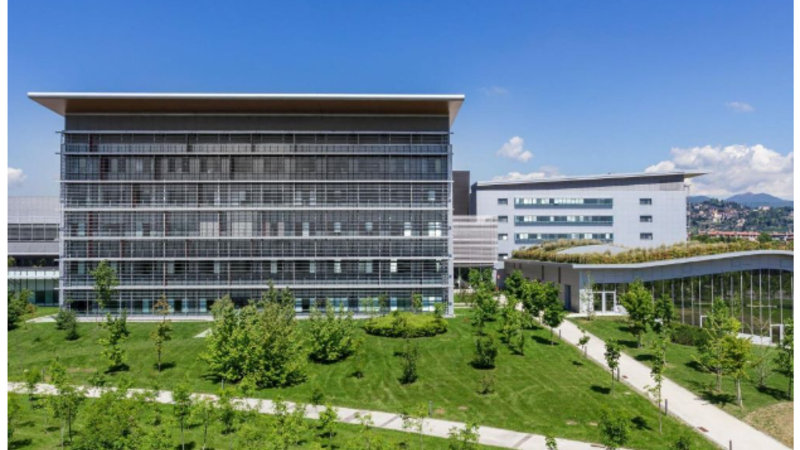In the realm of healthcare, the importance of creating a welcoming and healing environment cannot be overstated. While medical expertise and advanced technology are essential components, the physical surroundings also play a significant role in patient satisfaction and well-being.
In this regard, landscaping emerges as a crucial aspect of medical center management, encompassing both aesthetic appeal and functional benefits. This article explores the intersection of medical center landscaping and business management, elucidating how strategic landscaping initiatives can positively impact various aspects of healthcare facilities.
The Significance of Landscaping in Medical Centers
In the realm of healthcare, the significance of landscaping in medical centers extends far beyond mere aesthetics. Medical center landscaping goes beyond just a pleasing facade; well-designed landscapes play a pivotal role in enhancing patient experience, fostering staff well-being, and shaping community engagement..
Enhancing Patient Experience
The first impression of a medical facility often stems from its exterior. Well-designed landscapes evoke feelings of calmness and serenity, which can alleviate patient anxiety and contribute to overall satisfaction. By creating inviting outdoor spaces, medical centers foster a positive environment conducive to healing.
Improving Staff Morale and Productivity
Landscaping not only benefits patients but also influences the well-being of healthcare staff. Access to green spaces and natural elements has been linked to reduced stress levels and increased job satisfaction among employees. Moreover, aesthetically pleasing surroundings can enhance concentration and productivity, ultimately benefiting the delivery of patient care.
Community Engagement and Reputation
An attractive landscape extends beyond the confines of the medical center, serving as a focal point for the community. By hosting events or offering public amenities within the premises, medical facilities can strengthen their ties with the local populace. Positive interactions with the community enhance the institution’s reputation and foster goodwill, potentially attracting more patients and partnerships.
Strategic Approaches to Medical Center Landscaping
When it comes to landscaping in medical centers, strategic approaches are paramount for creating environments that promote healing and sustainability. From integrating therapeutic elements to implementing efficient maintenance strategies, thoughtful planning ensures that landscaping enhances both the functionality and aesthetics of healthcare facilities.
Integration with Healing Spaces
- Landscaping design should align with the principles of evidence-based healthcare design, incorporating elements that promote healing and well-being.
- This involves strategic placement of greenery, water features, and therapeutic gardens to create tranquil environments conducive to relaxation and reflection.
- Collaborating with healthcare professionals and landscape architects can ensure that the landscape complements the medical center’s healing mission.
Sustainability and Eco-Friendly Practices
- Incorporating sustainable landscaping practices not only reduces environmental impact but also aligns with modern healthcare trends towards sustainability.
- Implementing features such as native plantings, rain gardens, and permeable paving not only conserve resources but also contribute to a healthier ecosystem.
- Moreover, embracing eco-friendly initiatives demonstrates corporate social responsibility and can attract environmentally conscious patients and stakeholders.
Efficient Maintenance Strategies
- Effective landscape management requires a balance between aesthetic appeal and operational efficiency. Implementing proactive maintenance schedules and investing in modern irrigation systems can optimize resource allocation and minimize operational costs.
- Additionally, outsourcing landscaping services to reputable vendors can ensure professional upkeep while allowing medical staff to focus on core healthcare responsibilities.
The Business Case for Investing in Landscaping
Investing in landscaping for medical centers is not just an expenditure; it’s a strategic decision with significant financial implications. From bolstering return on investment to gaining a competitive edge and ensuring regulatory compliance, landscaping initiatives offer tangible benefits that directly impact the bottom line of healthcare institutions.
Return on Investment (ROI)
- While landscaping projects entail upfront costs, the long-term benefits justify the investment from a business perspective. Studies have shown that well-designed landscapes can increase property values and rental rates for medical facilities.
- Moreover, improved patient satisfaction and staff retention rates translate into tangible financial gains for healthcare institutions. By quantifying the ROI of landscaping initiatives, decision-makers can prioritize such projects within budget allocations.
Competitive Advantage
- In a competitive healthcare landscape, differentiation is key to attracting patients and maintaining market share. A thoughtfully landscaped medical center sets itself apart from competitors by offering a unique and inviting environment.
- By leveraging landscaping as a strategic asset, medical facilities can enhance their brand image and position themselves as leaders in patient-centered care.
Regulatory Compliance and Risk Management
- Compliance with landscaping regulations and standards is essential for mitigating legal and reputational risks. Failure to maintain outdoor spaces can result in safety hazards, environmental violations, and negative publicity.
- By proactively addressing landscaping requirements and implementing risk management protocols, medical centers safeguard their operations and uphold regulatory compliance, thereby minimizing potential liabilities.
Conclusion
In conclusion, landscaping serves as a powerful tool for enhancing the business and management aspects of medical centers.
By prioritizing strategic landscaping initiatives, healthcare institutions can create welcoming environments that benefit patients, staff, and the broader community. From improving patient experience and staff morale to bolstering competitive advantage and mitigating risks, investing in landscaping yields multifaceted returns.
By integrating landscaping considerations into business strategies, medical centers can elevate their overall performance and reinforce their commitment to holistic patient care.
